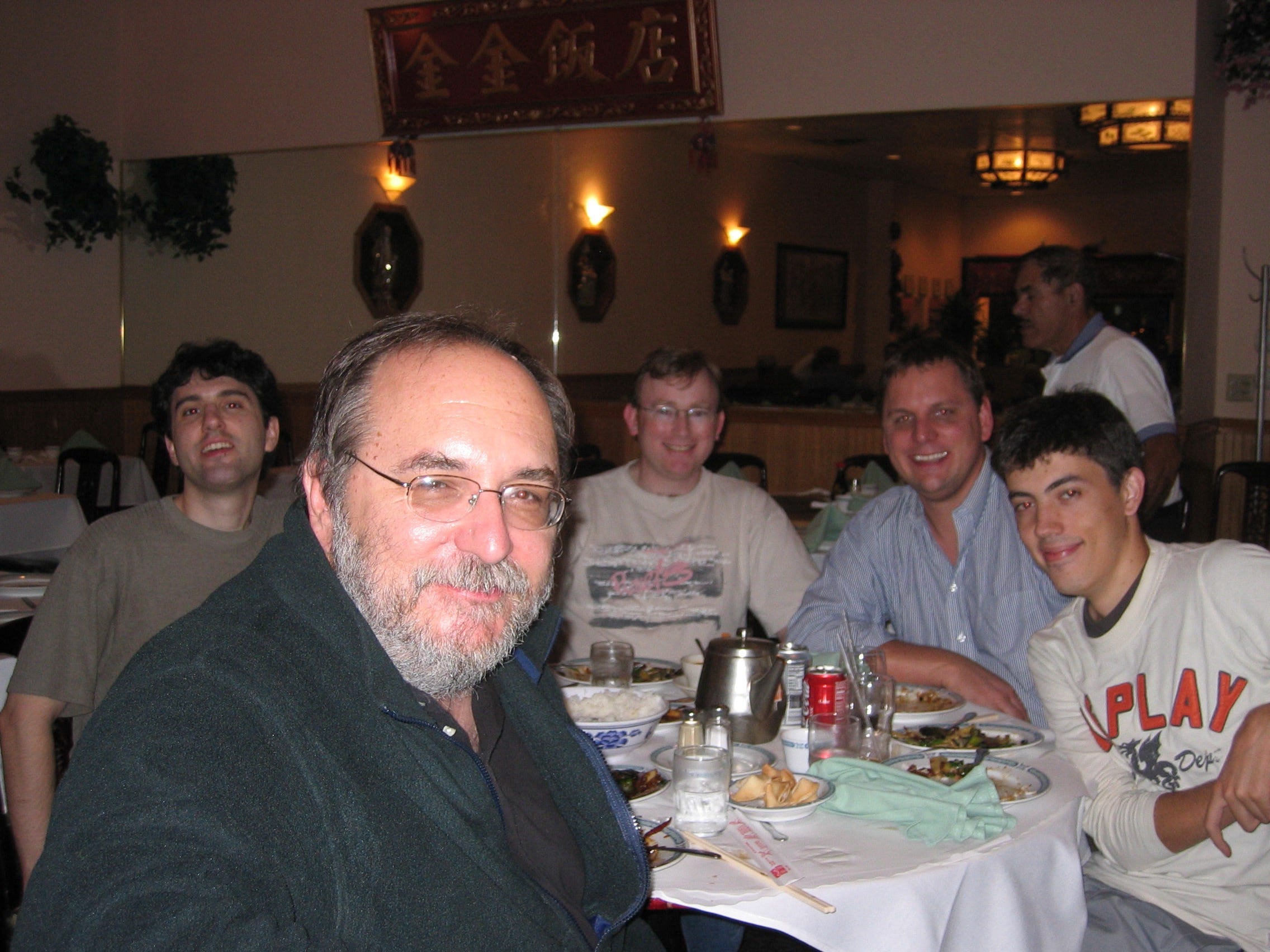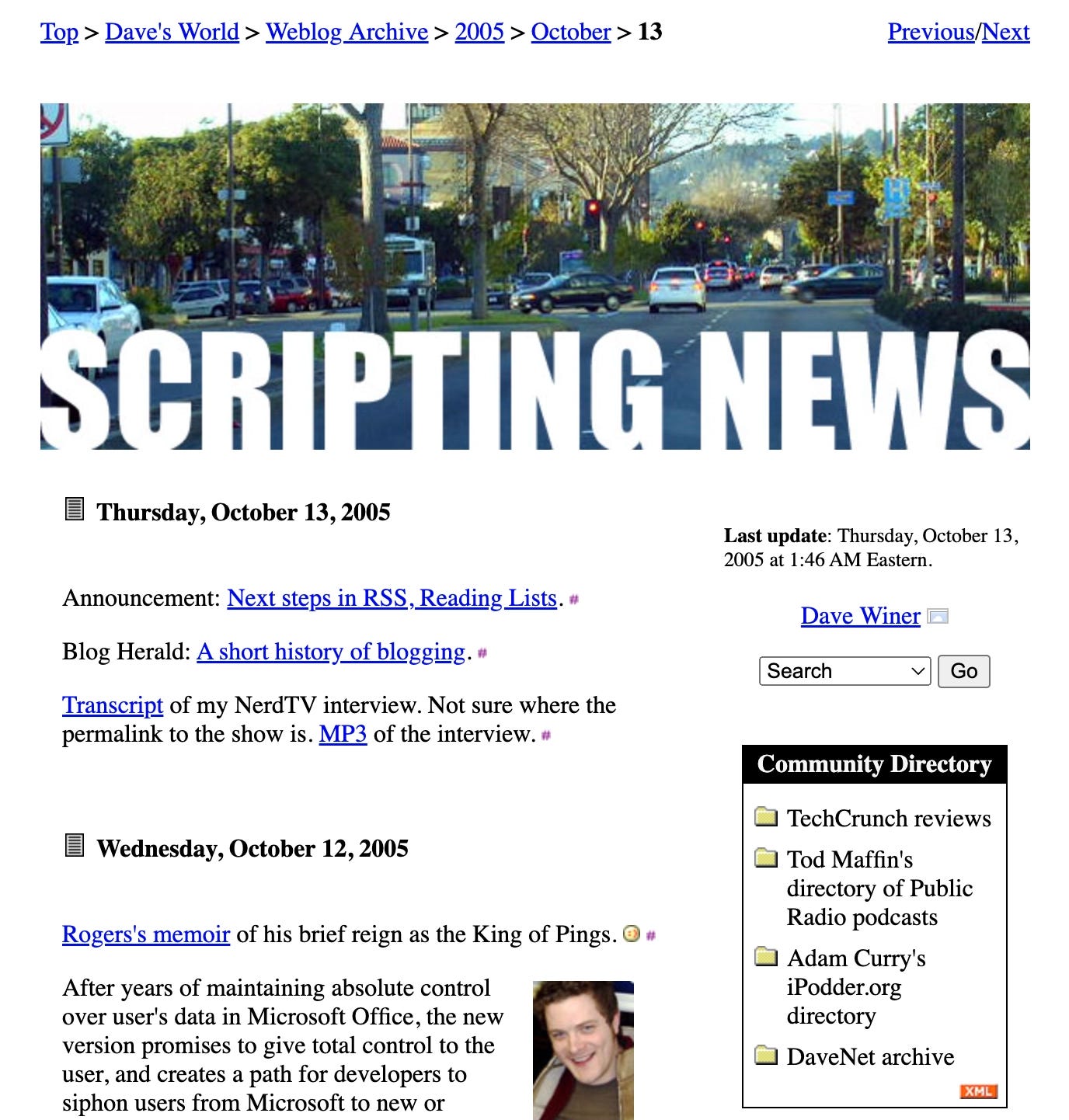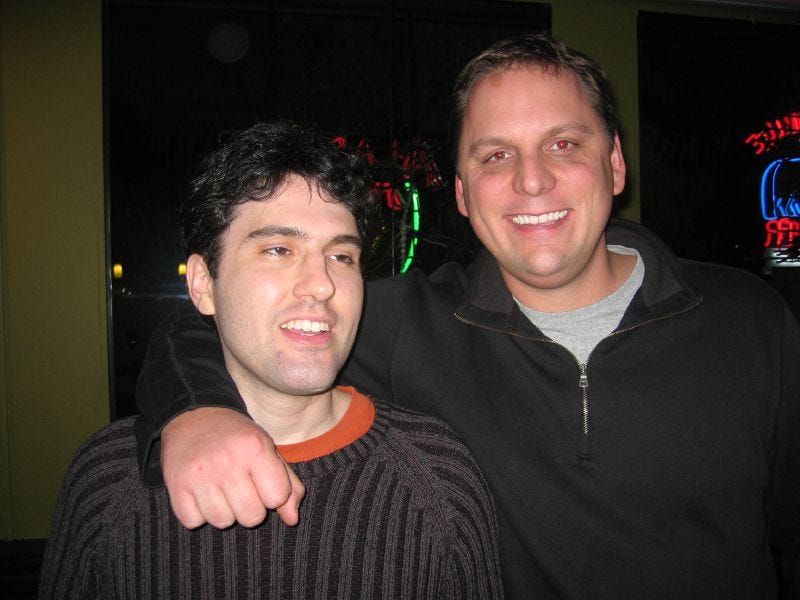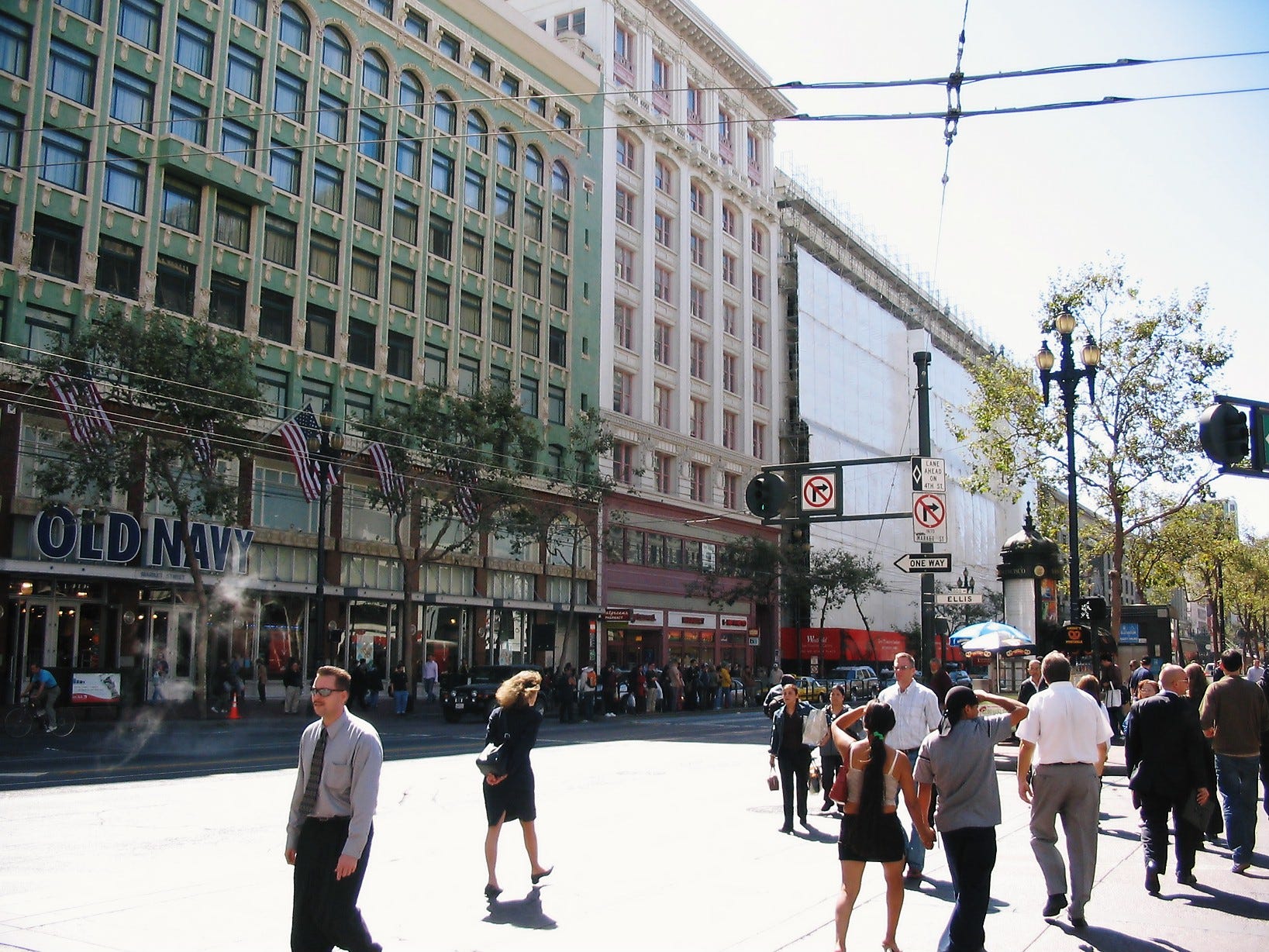Spicy Noodles: Dave Winer and the Web 2.0 Workgroup
The Web 2.0 Workgroup forms, and I meet one of my web heroes: Dave Winer. Also, Techmeme's Gabe Rivera and I talk about our nascent web businesses.

During my stay at the TechCrunch ranch, Mike Arrington, Fred Oliveira and I had been discussing how to better team up. At the time, creating a network of blogs was a trend — in August, I’d joined the 9Rules network, a community of web design-focused blogs. I’d joined it mainly because of their revenue-sharing advertising network, but also to help me connect with more of the design community. It turned out the 9Rules network was more useful for swapping contacts (I was introduced to my next web host through them), but I earned very little income from it. Nevertheless, the idea had been planted in my head that blogs banding together could be useful. So during my Silicon Valley trip, Mike, Fred and I decided to create our own network: the Web 2.0 Workgroup.
Fred created a new website and logo for the network, and the RSS feeds for our three blogs were put up on the site so that our latest posts were displayed. In my launch post, I noted that our blogs were all complementary — “Mike blogs on new products; Fred blogs on usability, design and dev; I blog about Web 2.0 trends and developments.” The idea, I wrote, was that someone who subscribes to my blog might also be interested in the other two — and ditto for Mike and Fred’s blogs. I also mentioned that we were looking to invite other bloggers into the network.

The Web 2.0 Workgroup homepage.
The first blogger we invited was Dave Winer, who had been publishing on the web since 1994 and had created one of the first web syndication feeds in December 1997. Dave had gone on to create RSS 2.0, which became the default syndication method for blogs like mine in the 2000s. I’d also started out as a blogger using his publishing software, called Radio Userland, and was an admirer of his essays about technology. I’d emailed him, as a fan, multiple times since starting my blog in 2003. He didn’t always reply, but when he did, I sometimes got the impression that I’d accidentally insulted him. It was an early warning of his prickly personality.
Dave had recently sold Weblogs.com, a ping-server used by blogs, for a couple of million dollars to Verizon. Mike and Keith had helped him broker the deal, so there was a regular communication channel between them. A couple of days after my Yahoo visit, Dave invited the Web 2.0 Workgroup bloggers to dinner at a place called Jing Jing, in Palo Alto. It was a regular of his and he assured us that the spicy noodles there were fabulous.
Dave was 50 years old at this time (roughly the same age as I am now, writing this book) and in person he was a large, bear-like presence. He had thinning dark hair, thin rectangular glasses, and a full beard that had already gone grey. He did a lot of the talking at the dinner, but the rest of us were happy for him to take the lead, given his illustrious reputation in the web world. He was in a good mood, so there was no sign of the over-sensitivity I’d sensed in our online and email communications to this point. Also, the spicy noodles were indeed spectacular!

My photo of the others during the spicy noodles lunch.
Dave was not a fan of Web 2.0. While he recognized that the web had moved on from the Dot Com era, he preferred to use his own term: “the two-way web.” To be fair, he’d articulated his vision “for the Web as an easy writing and publishing environment” back in January 2001, well before Tim O’Reilly and co came up with the Web 2.0 moniker. That was when he launched TheTwoWayWeb.com, which is the website that became a part of our workgroup. I think he simply resented the Web 2.0 terminology and wanted people to recognize his prior art.
I was a fan of Dave’s theories about the web in large part because he credited Tim Berners-Lee as being the true progenitor. In the very first post I’d written on Read/Write Web, in April 2003, I mentioned both Berners-Lee and Winer as inspirations. I also admired Winer because, like Berners-Lee, he built tools to support his vision. He’d created weblog publishing software, syndication formats, developer scripting tools, and outliners (a form of word processing software that had an “expand and collapse” outline display). Not to mention his weblog Scripting News, which was a key influence on early tech bloggers like me. So, to me, there was no doubting his credentials as both a visionary and a practical toolmaker.

Scripting News at around the time I met Dave Winer.
Unlike Tim Berners-Lee, however, Dave Winer’s personality was neither humble nor self-effacing. Online, he had a curious mix of arrogance and sensitivity. He was opinionated, which was admittedly a good thing in blogging, but he was also quick to take offence. In one email exchange we had in May 2005 about advertising in RSS feeds, he was dismissive of my analysis of the situation (“I don’t have an opinion on your thesis. Sorry.”) and claimed that I’d misunderstood him. Perhaps I had, but what was striking about that email exchange is that he didn’t once acknowledge that I might have made a good point.
We were never close, but many years later I finally got tired of Dave’s attitude and stopped following him. It was a Twitter exchange in 2017 that did it. We were discussing RSS feed readers and I had listed some of the features I was looking for at that time. Since I knew Dave was building a new feed reader product, I added that I would be happy to be an early tester of it. His response: “Forget it. I do development for myself these days for this exact reason. Users feel like they don’t have to do anything, just demand stuff.” I replied, “I’m not demanding anything, I was simply stating my personal preferences in a feed reader.”
It’s a shame, in retrospect, because he had been friendly to me at that spicy noodles dinner in Palo Alto in 2005 — and I think he may’ve paid for the meal, too. Mike also had his ups and downs with Dave, and he too fell out with him eventually. There’s a saying that you shouldn’t meet your heroes, but I am still glad I met Dave. He had been generous to me in the early days, by linking to a then unknown blogger and occasionally replying to my emails; and he had undoubtedly built some of the most innovative web technology of that era, which I gratefully used.
But being nice to people is important, too — the two-way web is a miserable experience otherwise, as we all discovered a decade later in the prime of social media.
As I neared the end of my first trip to Silicon Valley, I began to think more seriously about moving here. I’d enjoyed the camaraderie of Mike, Fred and Gabe — and others I’d met in person for the first time, like Josh Porter and Fergus Burns. If I moved to Silicon Valley, I’d surely become good friends with Mike and Gabe (the others all lived elsewhere). We were around the same age and had lots in common — work, music tastes, sense of humor, and so on. Although, I had become aware during my trip that Mike lived on a slightly higher rung of society than me, in terms of his network and familiarity with high-powered people in the tech industry. Perhaps I’d get ingratiated into that stratum of Silicon Valley too, but I wasn’t sure.

Gabe and Mike, October 2005; photo by Mike Arrington.
America didn’t have a class system, like the British and its colonies, but I’d learned on this trip that everything here revolved around money. Mike clearly had some money, but more importantly he knew people with a lot of it — and it was his ambition to get a lot of it, too. On the flip side, I’d also discovered that the US was a meritocracy in terms of talent. Everyone I’d met had treated me like an equal and was friendly towards me. They wanted to know my opinions about their startups and who I’d met; they didn’t care about my background or what I used to do for a job, they only cared about what I knew now and who I knew now. That was different to what I was used to in New Zealand, where people I met usually had no interest in my blog (other than a couple of the developers at my previous day job).
I soon realised, however, that the reason why people in the US were so open and friendly was that they wanted something from me — some knowledge or networking connection that would help them make money.
Even though I’d experienced, first-hand, why America is called the land of opportunity, I’d also had a glimpse of why racism was so overt here. Because I hadn’t hired a car, I’d had to rely on public transport to get around the valley — going from Atherton to Palo Alto or Menlo Park — or even just to take me from Mike’s house to the Atherton Caltrain station. I’d walk up James Avenue, where Mike lived, onto Middlefield Road, the main road in and out of Atherton. There I’d catch a SamTrans bus, painted white with blue and red trim. The first couple of times I did this, I was surprised to note that I was perhaps the only white person on the bus. It was the opposite of my experience at the Web 2.0 Conference, which was overwhelmingly attended by white people.

I got to know the real America during this trip. This is a photo of Market St, San Francisco, on 4 October 2005.
Even though I was aware that I wasn’t on Mike’s level in terms of money or personal network, I felt that Gabe Rivera and I were cut from the same cloth. Even literally, in that we both dressed badly! He usually wore black jeans and a long-sleeve tee-shirt in a primary color like red or yellow. I wore striped blue polo shirts and cheap patterned tee-shirts, along with blue jeans or tan slacks — I had no dress jacket at all, or dress sense for that matter.
Gabe had driven me around a bit during my stay, since I didn’t have a rental car. He liked to blast Van Morrison songs on his car’s tape deck, so we would drive through Atherton and Palo Alto humming along to the likes of “Brown-eyed Girl” and “Cyprus Avenue.”
We also chatted a couple of times over burgers at a local joint in Atherton or Menlo Park — I don’t recall the name, but it was one of those 1950s-style restaurants with cherry-red booths and an open kitchen. Tech.memeorandum was still less than a month old at this time, but at the TechCrunch ranch we had all been talking about whether to take venture capital to scale our respective sites. Gabe was certain, even then, that he wanted to grow his little company on his own steam (and this is exactly what he did over the next 15+ years).

The tech blogosphere was abuzz about blog valuations in October 2005.
Mike had told me my blog was worth a million dollars, based on what Jason Calacanis got for Weblogs, Inc. Blog valuations was a topic of discussion in the tech blogosphere at the time, and another blogger had also pegged the value of RWW at $1 million. Although I was starting to realize that my blog did have value, I was still thinking too small at that stage — I thought RWW was primarily useful to me as a networking tool, a way to meet people in Silicon Valley. But I knew that Mike was considering a VC infusion to expand TechCrunch, just because he was friends with a bunch of those people. So in the back of my mind, I was slowly coming to terms with RWW potentially being more than just a part-time income.
As for Gabe, he used sarcasm a lot to deflect serious conversations, but I could tell even at this very early stage that his only ambition was to build a self-sustaining business. Tech.memeorandum was fully automated at this point, so another thing we discussed was how he’d continue to iterate on the product. I was surprised when he said he was open to adding human curation — but, again, that is what he ended up doing a year or two later.
Lead image: Celebrating the Web 2.0 Workgroup at Jing Jing, in Palo Alto. From left to right: Gabe Rivera, Dave Winer, me, Mike Arrington, Fred Oliveira; photo by Dave Winer.
This post is part of my serialized book, Bubble Blog: From Outsider to Insider in Silicon Valley’s Web 2.0 Revolution. View table of contents.
Next up: 011. The Web 2.0 Illuminati
You're reading Cybercultural, an internet history newsletter. Subscribe for free, or purchase a premium subscription. Your support for this indie publication would be greatly appreciated.